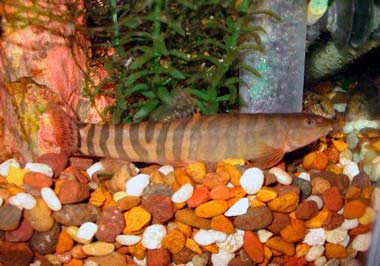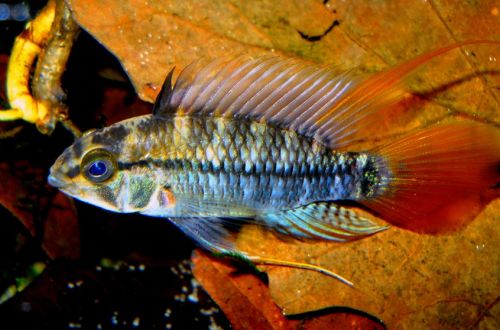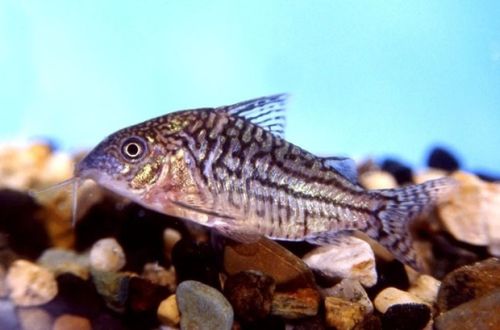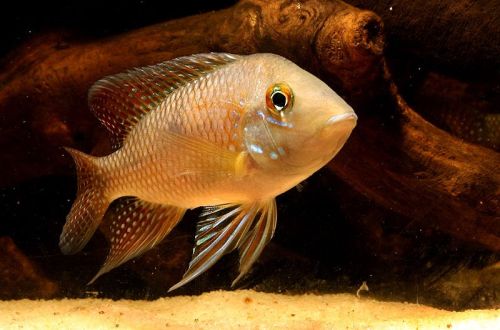
Scaturigin schist
Schistura skaturigina, the scientific name Schistura scaturigina, belongs to the family Nemacheilidae (Goltsovye) The fish comes from South Asia. It is found in the upper basin of the Ganges River in Nepal and the northeastern states of India. Inhabits sections of rivers flowing through mountainous terrain with rocky substrates and fast, sometimes turbulent currents.
Contents
Scaturigin schist
 Schistura scaturigina, scientific name Schistura scaturigina, belongs to the family Nemacheilidae (Goltsovye)
Schistura scaturigina, scientific name Schistura scaturigina, belongs to the family Nemacheilidae (Goltsovye)

Description
Adult individuals reach a length of 6-7 cm. The fish has an elongated cylindrical body and slightly compressed from the sides. The fins are short and translucent. Sensitive antennae are located on the head near the mouth. The color is gray-olive with a pattern of dark vertical stripes.
Sexual dimorphism is weakly expressed. There are no clear visible differences between male and female.
Behavior and Compatibility
Demonstrates territorial behavior. Fish occupy a site at the bottom and jealously protect it from relatives. Despite this behavior, Schistura skaturigina need company, so it is recommended to purchase a group of 3-4 fish, provided there is a sufficiently spacious tank. Skirmishes are possible in a small aquarium.
For the above reason, bottom fish, such as catfish, should not be purchased as neighbors. At the same time, they calmly perceive other species that live in the water column or near the surface.
Brief information:
- The volume of the aquarium – from 60 liters.
- Temperature – 18-25°C
- Value pH — 6.5–7.5
- Water hardness – soft to medium hard (5-15 dGH)
- Substrate type – any
- Lighting – any
- Brackish water – no
- Water movement – moderate
- The size of the fish is 6–7 cm.
- Food – any sinking food
- Temperament – peaceful
- Keeping in a group of 3-4 individuals
Maintenance and care, arrangement of the aquarium
The optimal size of the aquarium for 3-4 fish starts from 60-70 liters. The design uses a coarse-grained sandy or rocky substrate with small stones, pebbles, interspersed with large boulders and snags.
It is desirable to provide a moderate internal flow, simulating a mountain river, using a separate pump or a productive filtration system.
For long-term maintenance it is important to maintain high levels of dissolved oxygen, warm water with pH values around 7.0 and medium hardness.
Being a native of flowing waters, Schistura skaturigina is sensitive to the accumulation of organic waste. It is necessary to regularly (at least once a week) clean the soil and replace part of the water with fresh water.
Food
Captive-bred fish will generally accept sinking flakes and pellets, which are popular in the aquarium hobby.





